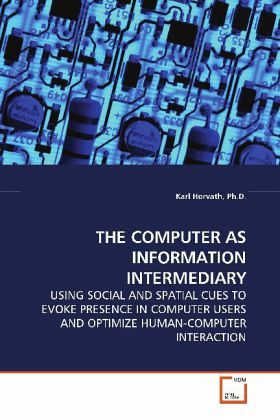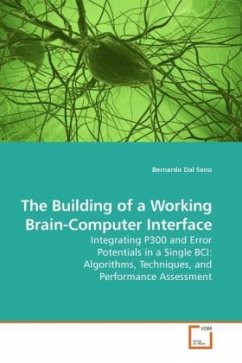
THE COMPUTER AS INFORMATION INTERMEDIARY
USING SOCIAL AND SPATIAL CUES TO EVOKE PRESENCE IN COMPUTER USERS AND OPTIMIZE HUMAN-COMPUTER INTERACTION
Versandkostenfrei!
Versandfertig in 6-10 Tagen
39,99 €
inkl. MwSt.

PAYBACK Punkte
20 °P sammeln!
As technology intertwines into the infrastructure of society and forms of communication (such as printed newspapers, printed books and radio) gradually change and even disappear, dependency on new technology grows. Technology fundamentally changes workflow, socialization, daily living and the discovery of unrealized ability. This information may help change the perception of computing and assist in developing understudied areas of technology such as ubiquitous computing and improving the way technology communicates with humans. By encouraging new research methods that include presence the acce...
As technology intertwines into the infrastructure of
society and forms of communication (such as printed
newspapers, printed books and radio) gradually
change and even disappear, dependency on new
technology grows. Technology fundamentally changes
workflow, socialization, daily living and the
discovery of unrealized ability. This information
may help change the perception of computing and
assist in developing understudied areas of
technology such as ubiquitous computing and
improving the way technology communicates with
humans. By encouraging new research methods that
include presence the accessibility and usability of
computing could dramatically change. Technology
could be more intuitive and adaptive making it
available to underserved populations such as the
physically and cognitively disabled.
society and forms of communication (such as printed
newspapers, printed books and radio) gradually
change and even disappear, dependency on new
technology grows. Technology fundamentally changes
workflow, socialization, daily living and the
discovery of unrealized ability. This information
may help change the perception of computing and
assist in developing understudied areas of
technology such as ubiquitous computing and
improving the way technology communicates with
humans. By encouraging new research methods that
include presence the accessibility and usability of
computing could dramatically change. Technology
could be more intuitive and adaptive making it
available to underserved populations such as the
physically and cognitively disabled.












